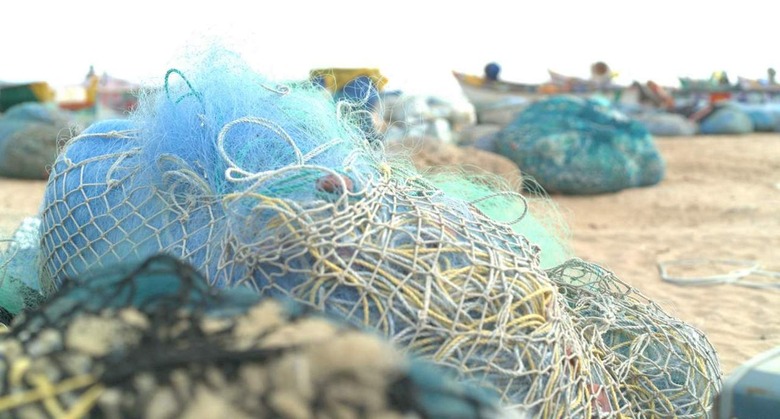The Galaxy S22 Will Debut A Surprising New Plastic
The launch event for Samsung's eagerly awaited Galaxy S22 smartphone series is fast approaching. When the covers are officially lifted on February 9, 2022, there will be more to the new devices than meets the eye, according to the company. Not only will they showcase the very latest technologies in hardware and software design from the South Korean technology behemoth, they will also represent its latest breakthroughs in the use of recycled post-consumer material (PCM). This will be the latest step in Samsung's Galaxy for the Planet initiative with an initial set of sustainability targets set for 2025 to reduce its environmental footprint and lessen resource depletion through the whole life cycle of each mobile device.
The Galaxy S22 range will be the first from Samsung to feature plastics that are made with repurposed ocean-bound discarded fishing nets. Exactly where these plastics will be used on the devices isn't clear, but the back side of the base model S22 springs to mind given Samsung's use of 'glastic' on the rear of the Galaxy S21 last year. There had been hopes that Samsung would switch back to an all-glass front and back across the range, but it seems that could be in question. Samsung has said in its press release that more will be revealed about the recycling technology it is using and, presumably, how it is being utilized in the Galaxy S22 range.
Discarded fishing nets are an environmental menace
As Samsung acknowledges, ocean-bound plastics are a major environmental problem, not just for aquatic wildlife, but also for humans as these plastics can find their way back into the food system and become ingested. Samsung says ocean-bound plastic can be defined as plastic waste of all sizes including micro-plastics, mezzo-plastics and macro-plastics found within 50 kilometers of shores where waste management is deficient. However, a less well-known threat are discarded fishing nets. Samsung points to a study that shows an astonishing 640,000 tons of fishing nets are abandoned and discarded every year.
Some of these fishing nets can loiter in our oceans for centuries causing all kinds of damage. They have been dubbed 'ghost nets' as they continue to capture and trap fish and other marine life long after intended. These nets also cause damage to the aquatic environment including damaging coral reefs and other natural habitats, and like micro-plastics, can also make their way into our food and water resources. Samsung's new environmental program may not eliminate the issue, but it is, as the company says, "vital first steps in keeping our oceans clean as well as preserving the planet and our collective future."

